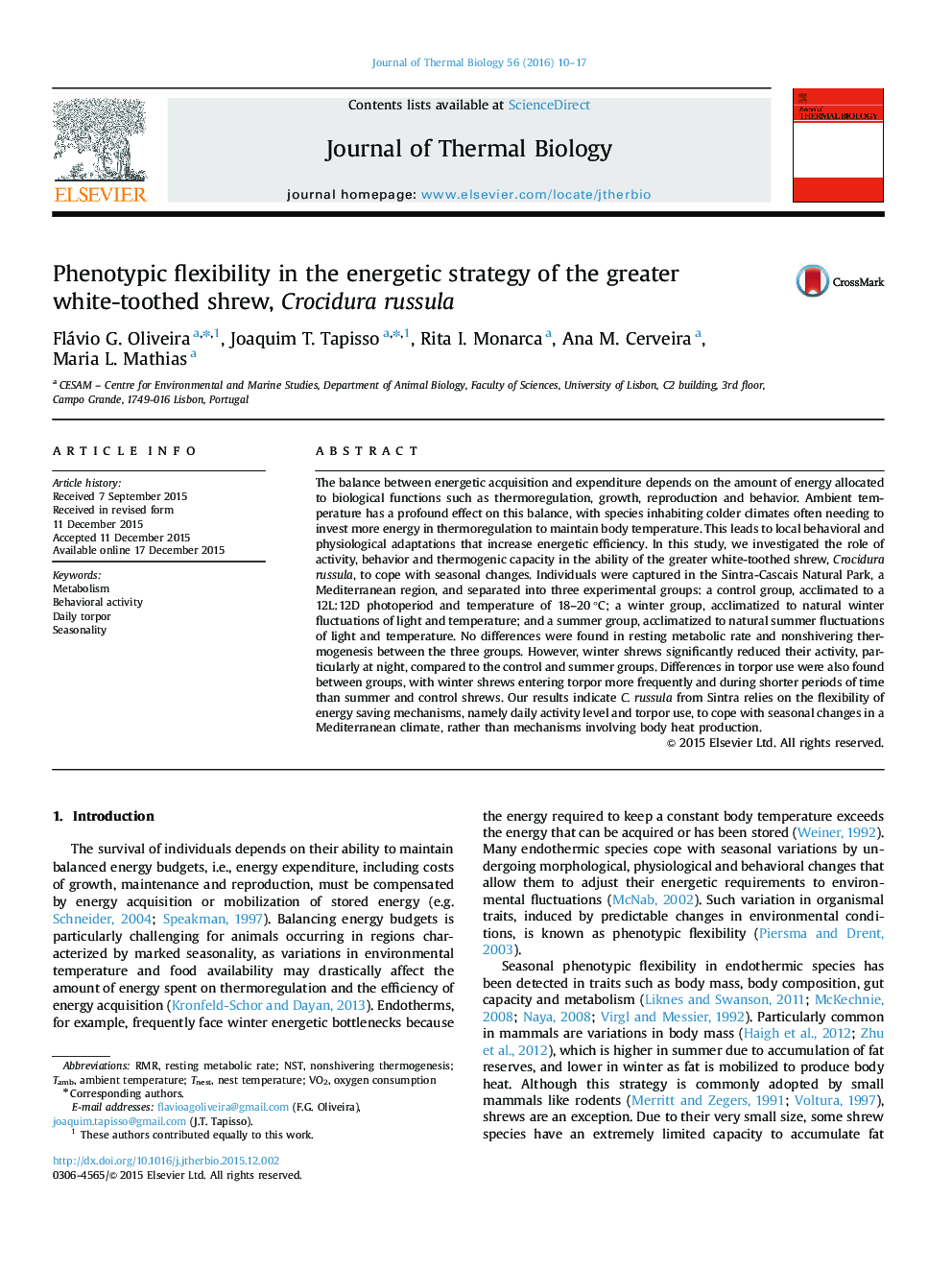| کد مقاله | کد نشریه | سال انتشار | مقاله انگلیسی | نسخه تمام متن |
|---|---|---|---|---|
| 2842736 | 1571090 | 2016 | 8 صفحه PDF | دانلود رایگان |

• We examined seasonal flexibility in the energetics of Mediterranean C. russula.
• No seasonal flexibility was found in RMR and NST.
• C. russula was more active in summer than winter.
• Torpor bouts were shorter but more frequent in winter.
• Seasonal adjustments were primarily achieved by energy-saving behaviors.
The balance between energetic acquisition and expenditure depends on the amount of energy allocated to biological functions such as thermoregulation, growth, reproduction and behavior. Ambient temperature has a profound effect on this balance, with species inhabiting colder climates often needing to invest more energy in thermoregulation to maintain body temperature. This leads to local behavioral and physiological adaptations that increase energetic efficiency. In this study, we investigated the role of activity, behavior and thermogenic capacity in the ability of the greater white-toothed shrew, Crocidura russula, to cope with seasonal changes. Individuals were captured in the Sintra-Cascais Natural Park, a Mediterranean region, and separated into three experimental groups: a control group, acclimated to a 12L:12D photoperiod and temperature of 18–20 °C; a winter group, acclimatized to natural winter fluctuations of light and temperature; and a summer group, acclimatized to natural summer fluctuations of light and temperature. No differences were found in resting metabolic rate and nonshivering thermogenesis between the three groups. However, winter shrews significantly reduced their activity, particularly at night, compared to the control and summer groups. Differences in torpor use were also found between groups, with winter shrews entering torpor more frequently and during shorter periods of time than summer and control shrews. Our results indicate C. russula from Sintra relies on the flexibility of energy saving mechanisms, namely daily activity level and torpor use, to cope with seasonal changes in a Mediterranean climate, rather than mechanisms involving body heat production.
Journal: Journal of Thermal Biology - Volume 56, February 2016, Pages 10–17